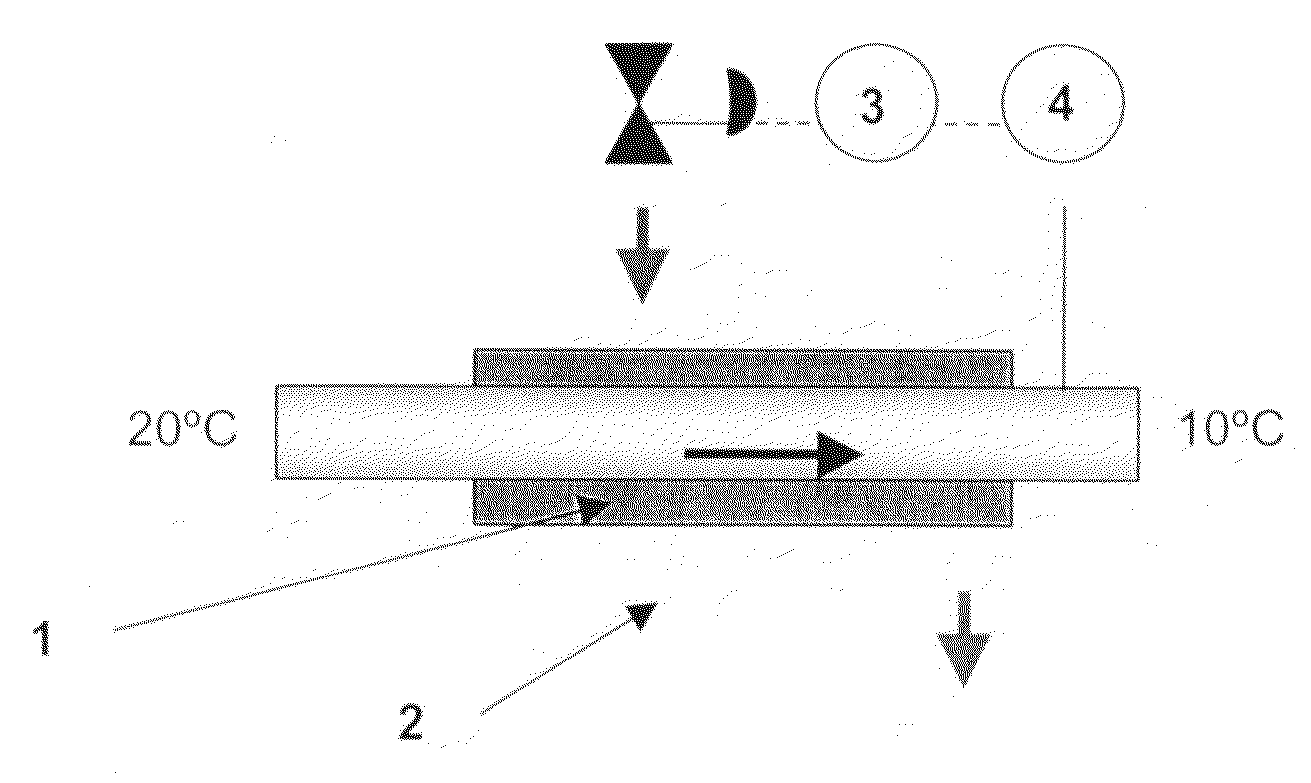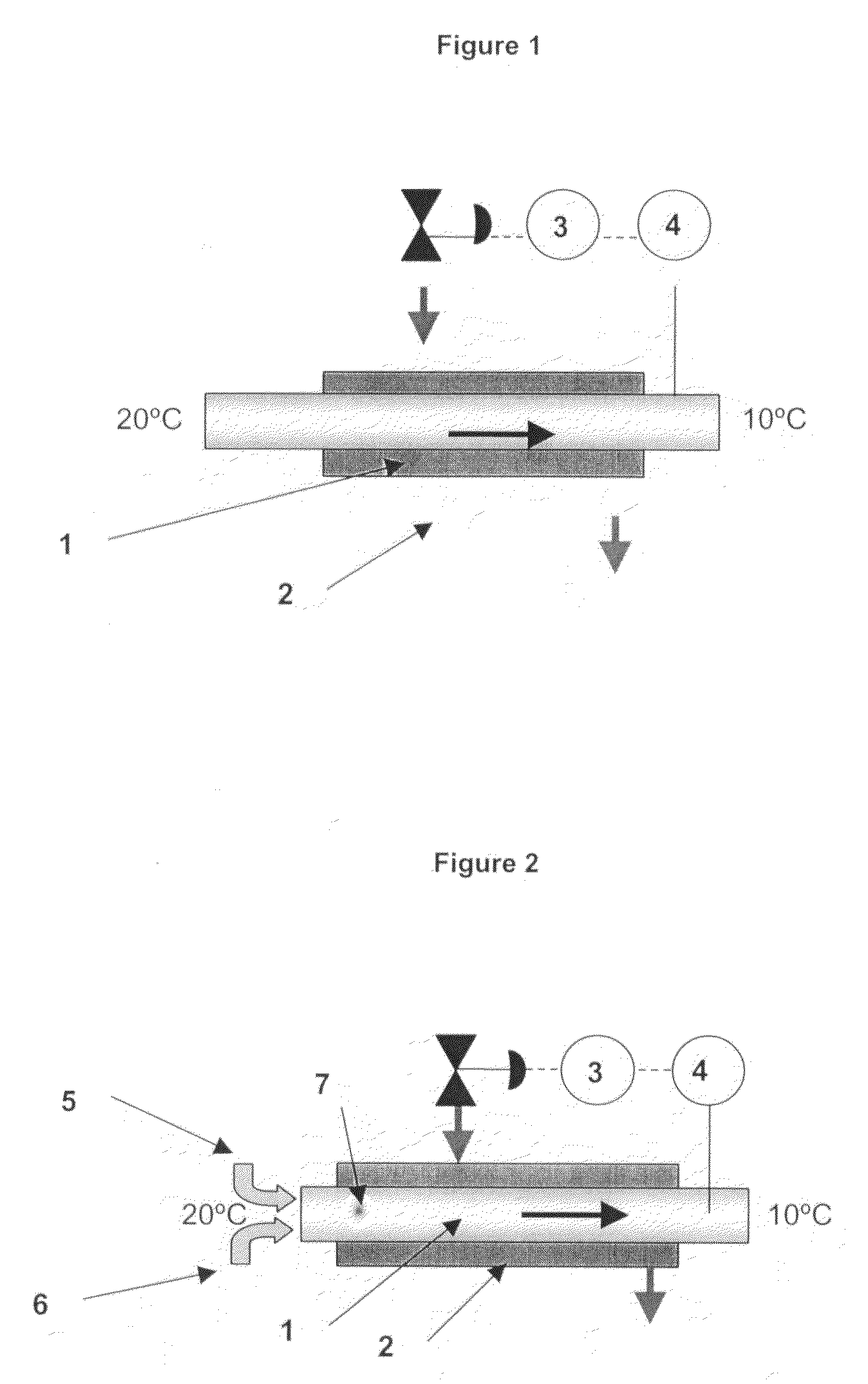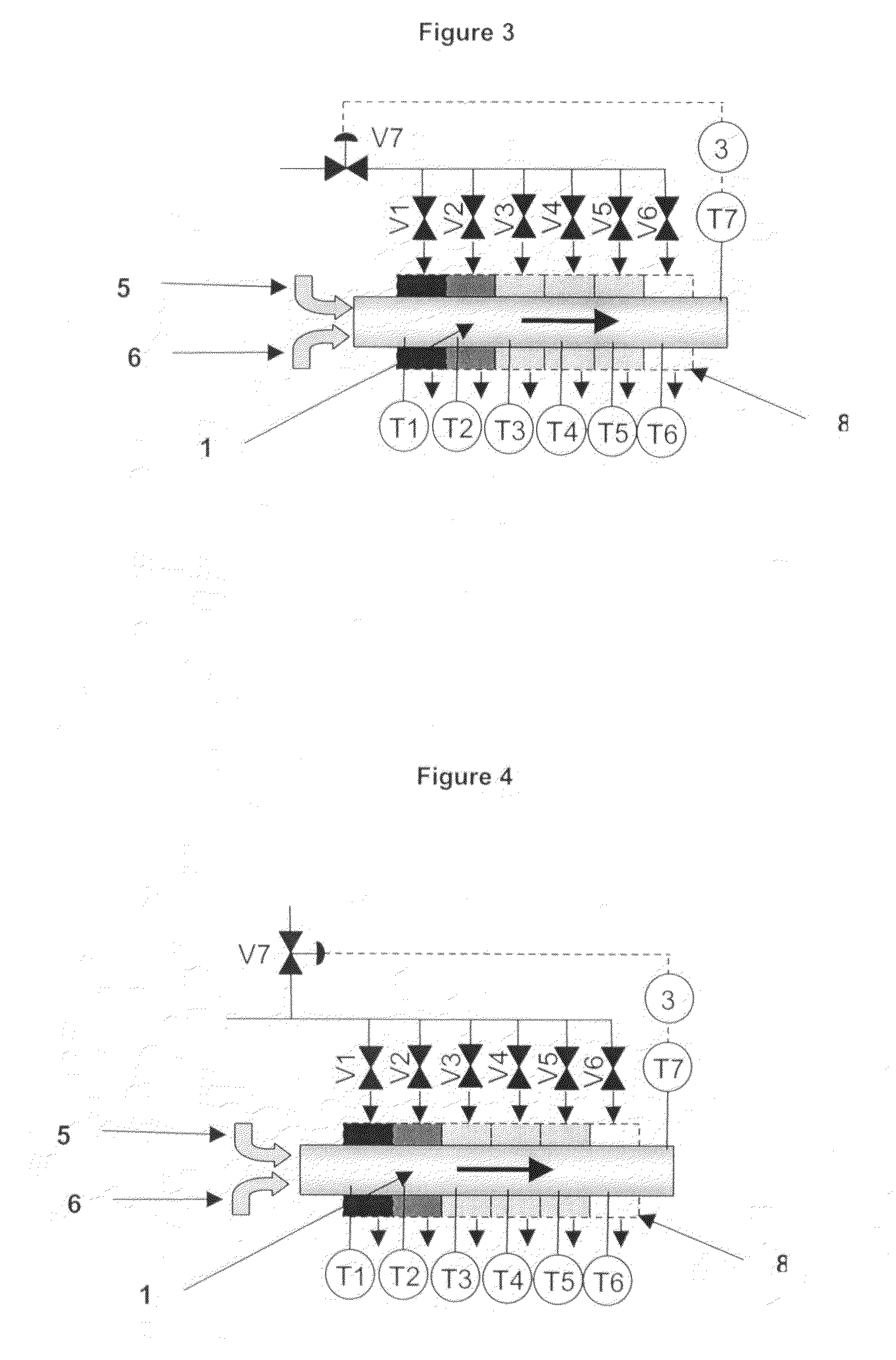Heat Exhanger with Varying Cross Sectional Area of Conduits
a technology of cross sectional area and conduit, which is applied in the direction of corrosion prevention, chemical/physical/physicochemical processes, coatings, etc., can solve the problems of oversized heat exchangers and inability to achieve uniform flow conditions, and achieve uniform temperature control, prevent erosion or corrosion, and improve peak heat transfer capacity
- Summary
- Abstract
- Description
- Claims
- Application Information
AI Technical Summary
Benefits of technology
Problems solved by technology
Method used
Image
Examples
Embodiment Construction
[0040]To illustrate the problem of non uniform heat load within a heat exchanger, FIG. 1 shows a process material (1) flowing through a long pipe around which is a cooling jacket (2). A temperature probe (4) is located in the pipe to measure the temperature of the process material emerging from the cooling pipe. A signal from this temperature probe is taken to a controller (3) and this is used to regulate jacket cooling. This allows the operator to control the final product temperature. FIG. 1 assumes that the process material is being cooled from 20° C. on entry into the pipe down to 10° C. on exit from the pipe. In this case therefore the temperature of the process material within this system is always between 20° C. and 10° C.
[0041]Consider now FIG. 2 where the process material (1) is a reacting mixture of two chemicals (5&6) which is liberating heat. If the heat exchanger is designed as a single stage, the zone where the two chemicals meet will get very hot even though the final...
PUM
| Property | Measurement | Unit |
|---|---|---|
| temperature | aaaaa | aaaaa |
| temperature | aaaaa | aaaaa |
| residence time | aaaaa | aaaaa |
Abstract
Description
Claims
Application Information
 Login to View More
Login to View More - R&D
- Intellectual Property
- Life Sciences
- Materials
- Tech Scout
- Unparalleled Data Quality
- Higher Quality Content
- 60% Fewer Hallucinations
Browse by: Latest US Patents, China's latest patents, Technical Efficacy Thesaurus, Application Domain, Technology Topic, Popular Technical Reports.
© 2025 PatSnap. All rights reserved.Legal|Privacy policy|Modern Slavery Act Transparency Statement|Sitemap|About US| Contact US: help@patsnap.com



